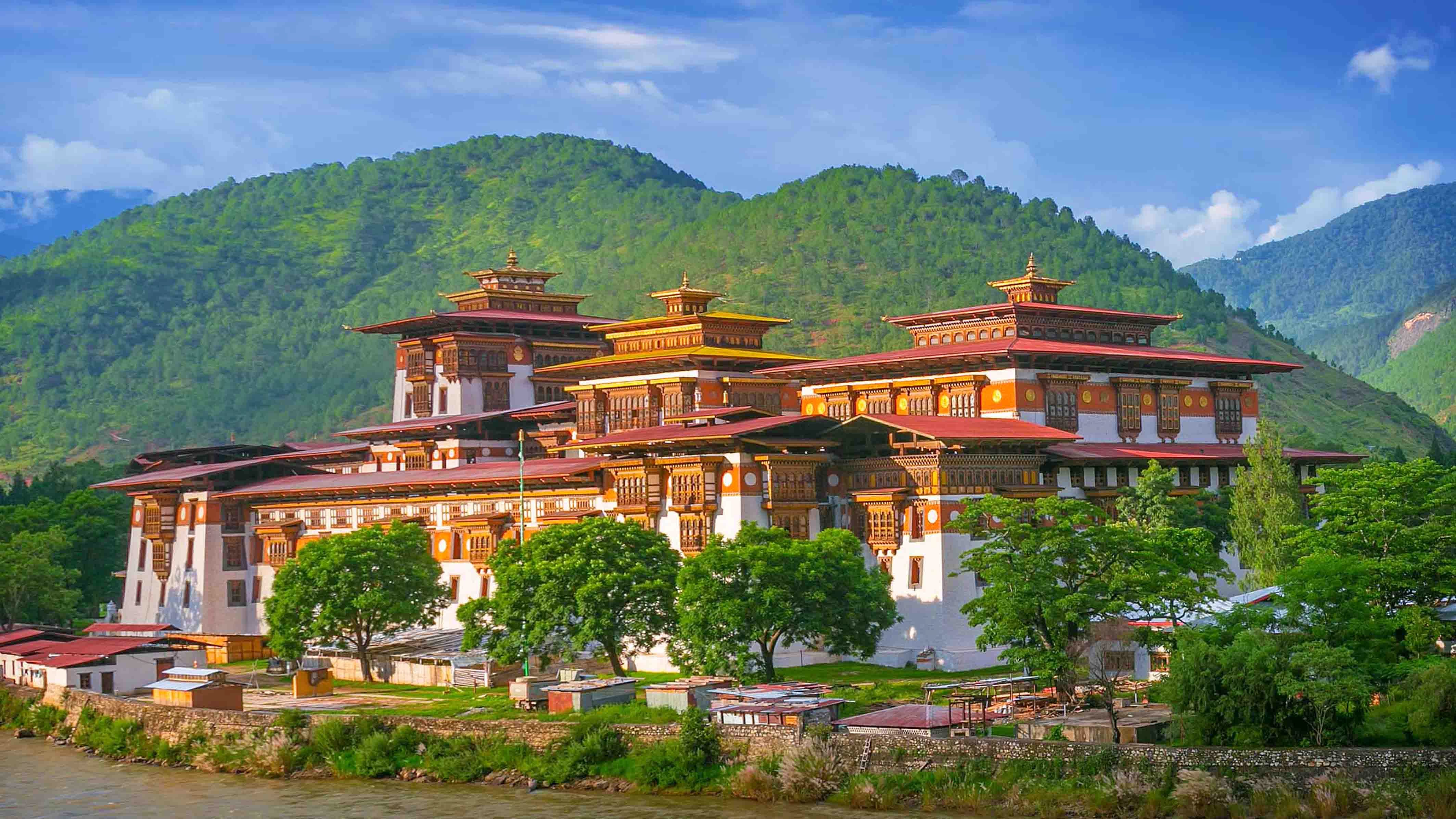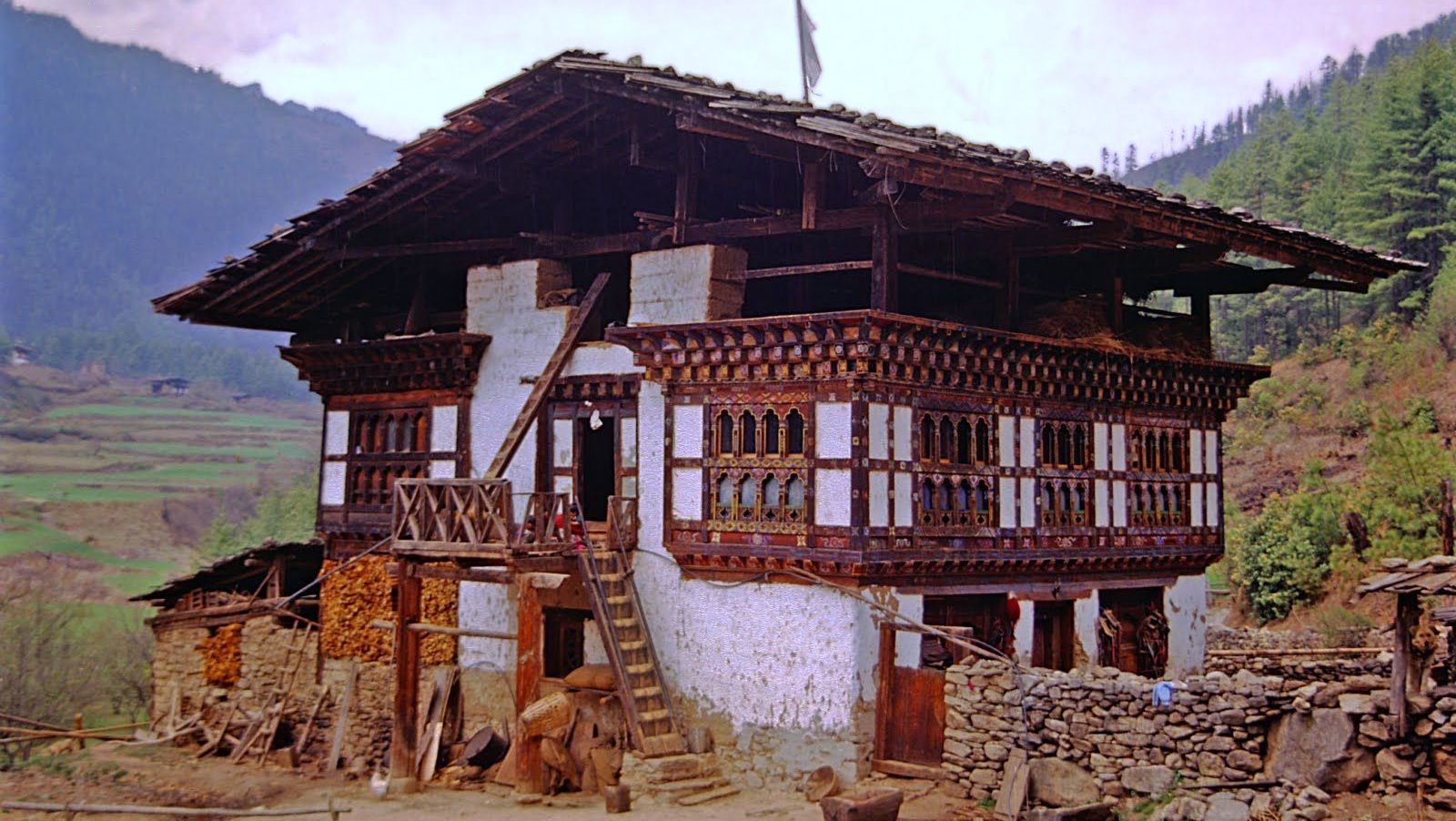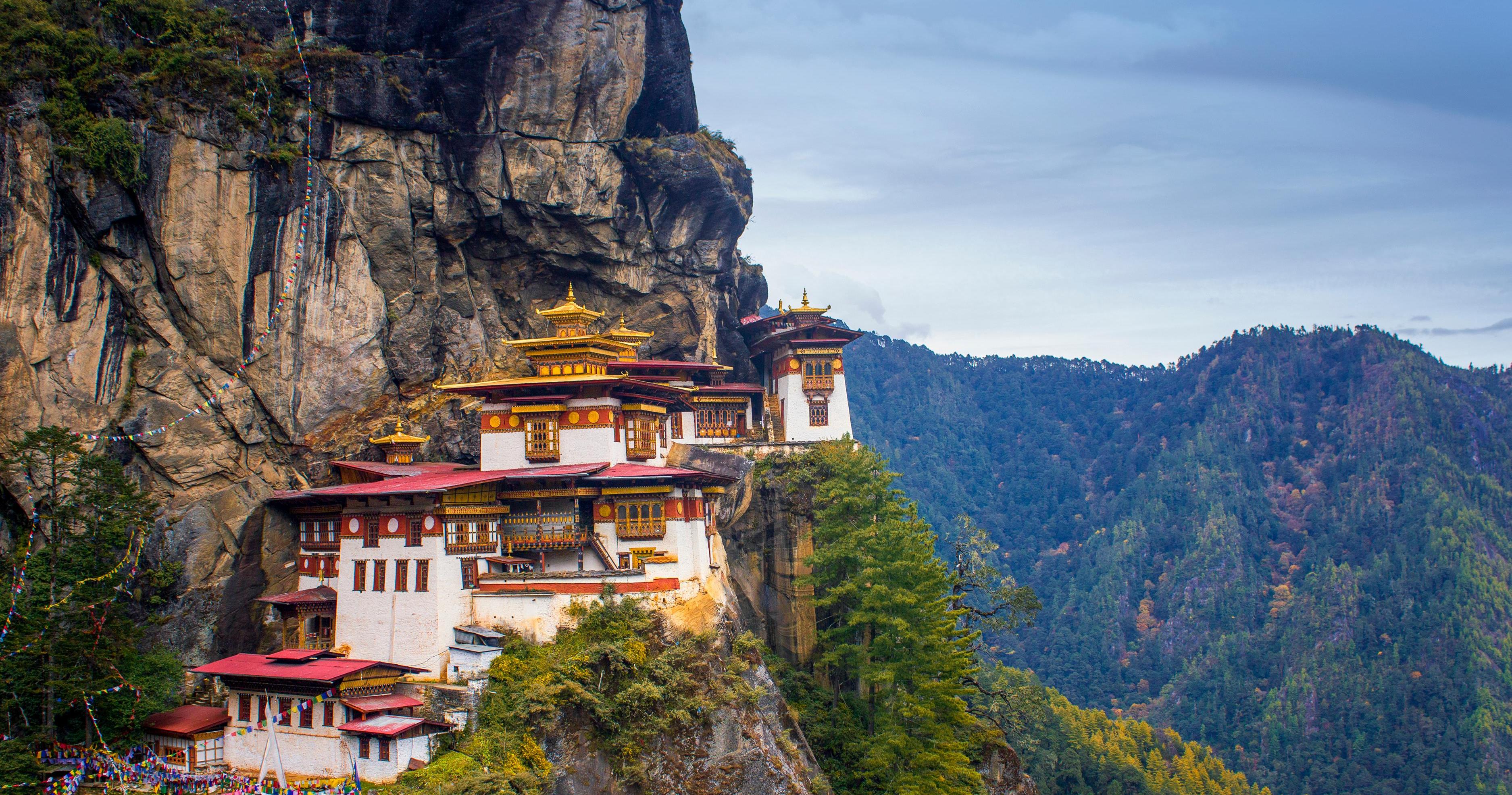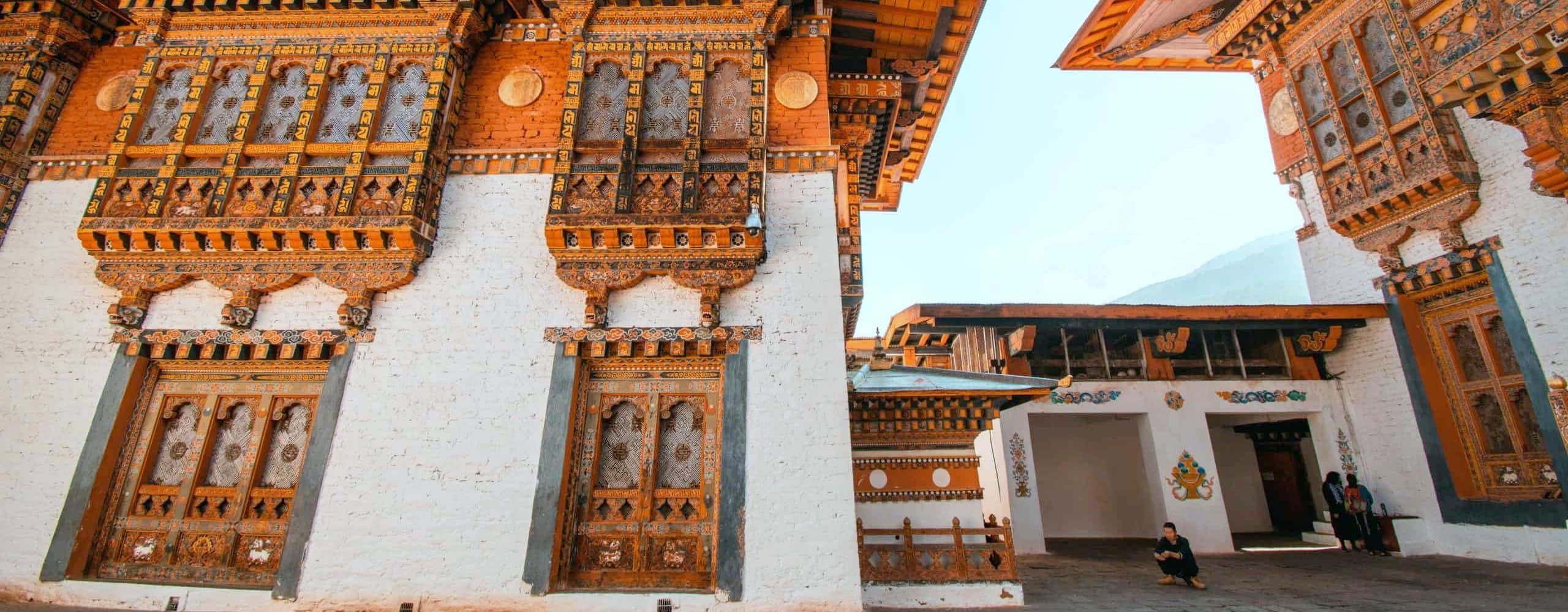Bhutan's architecture is a fascinating tapestry of tradition, spirituality, and harmony with nature. Known for its unique Bhutanese architectural design, this Himalayan kingdom boasts an array of dzong architecture, traditional Bhutanese houses, and serene Bhutan temples and monasteries. The architecture of Bhutan reflects a deep-rooted Buddhist influence, evident in the ancient Bhutanese buildings and Bhutanese fortress-monasteries that dot the landscape. From the intricate Bhutanese windows and doors design to the sustainable use of Bhutanese construction materials, each element showcases the kingdom's commitment to sustainability in Bhutanese architecture. As a traveler or an architecture enthusiast, exploring Bhutan offers a glimpse into the cultural significance of Bhutanese architecture, revealing a world where tradition and modernity coexist beautifully. Join us on a journey through the architectural wonders of Bhutan, where historical buildings blend seamlessly with the natural environment, creating a mesmerizing experience that is both enriching and enlightening.
At Amen Bhutan Tours and Treks, we specialize in showcasing Bhutan's architectural wonders, from majestic dzongs to tranquil temples and traditional homes. Our expertise and passionate guides bring the history and spirituality of these structures to life, offering a deep dive into Bhutan's cultural heritage. Committed to sustainable tourism, we ensure an immersive and respectful exploration of Bhutan's architectural beauty. Join us for an unforgettable journey into the heart of Bhutan's unique architecture.
Spiritual Foundations and Symbolism
The spiritual foundations and symbolism inherent in the architecture of Bhutan are deeply interwoven with the country's Buddhist traditions and beliefs. Here are key points that highlight this aspect:
- Buddhist Philosophy: Bhutanese architecture is profoundly influenced by Buddhism, with designs that reflect Buddhist values and teachings. Structures are often oriented to capitalize on spiritual significance, such as facing east towards the rising sun, a symbol of enlightenment.
- Mandala Designs: Many Bhutanese buildings incorporate the mandala, a complex, symbolic circular design that represents the universe in Buddhist and Hindu symbolism. Temples and dzongs may be constructed to reflect a mandala's geometry, embodying cosmic and religious concepts.
- Religious Motifs and Iconography: The use of religious motifs, including images of Buddha, bodhisattvas, and various deities, is common in Bhutanese architecture. These symbols serve not just an aesthetic purpose but also a spiritual one, turning buildings into spaces of meditation and reflection.
- Prayer Flags and Wheels: It's common to see prayer flags and wheels around and within architectural structures. These elements are believed to spread spiritual blessings with the wind, integrating the practice of prayer into daily life and the environment.
- Sacred Spaces: Every dzong, temple, and monastery houses a lhakhang (sanctuary), which is considered the most sacred space, hosting statues and thangkas that are objects of devotion and the focus of prayers and offerings.
- Eight Auspicious Symbols: Frequently, the Eight Auspicious Symbols of Buddhism are incorporated into the design of buildings and interiors, offering spiritual protection and blessings. These symbols include the lotus flower, conch shell, and endless knot, each with its own spiritual significance.
- Environmental Harmony: The principle of living in harmony with nature, a key tenet of Buddhism, is reflected in the use of natural materials and the integration of buildings into the surrounding landscape, symbolizing the interconnectedness of all life.
- Feng Shui (or Wind and Water): Bhutanese architecture often adheres to the principles of Feng Shui, an ancient practice that aims to harmonize individuals with their surrounding environment. The location, orientation, and layout of buildings are carefully considered to ensure a harmonious balance of energies.
- Protection and Purification: Architectural elements like the protective deity paintings (known as 'goenkhang') and the use of sacred water for purification rituals underscore the importance of spiritual protection and cleanliness in Bhutanese culture.
The architecture of Bhutan, rich in spiritual foundations and symbolism, serves as a living testament to the kingdom's deep Buddhist roots, offering insights into the spiritual practices that shape the Bhutanese way of life. This harmonious blend of religion, art, and architecture not only beautifies the landscape but also enriches the spiritual fabric of the nation.
Dzong Architecture
Dzong Architecture is one of the most distinctive and emblematic aspects of Bhutanese cultural heritage, blending religious, military, administrative, and architectural significance into grand structures that dominate the landscape. Here are the key features and facts about Dzong architecture:

- Multi-functional Complexes: Dzongs serve several functions as government administrative offices, monastic residences, and cultural centers for the local community, showcasing a versatile design philosophy that integrates various aspects of Bhutanese society.
- Strategic Locations: Often situated in strategic locations such as hilltops or at the confluence of rivers, Dzongs were originally built for defense purposes. Their positions allow for commanding views of the surrounding valleys and approaches, reflecting their historical role as fortresses.
- Massive Walls: Characterized by their high, thick walls, Dzongs are built to be impenetrable fortresses. The walls are typically sloped and whitewashed, giving these structures a majestic and imposing appearance.
- Traditional Construction: Dzong architecture eschews the use of nails or iron bars in construction. Instead, it relies on a traditional interlocking system of wood and stones, demonstrating an advanced understanding of natural materials and structural engineering.
- Courtyards (Dochey): Central to every Dzong is an open inner courtyard (Dochey), which serves as a communal area for religious ceremonies, festivals, and public gatherings, highlighting the Dzong's role as a community hub.
- Ornate Woodwork: The windows, doors, and balconies of Dzongs feature intricate woodwork, often painted in vibrant colors with elaborate Buddhist motifs and symbols, adding a layer of spiritual significance and aesthetic beauty to the structures.
- Tower (Utse): A central tower (Utse) is a prominent feature of most Dzongs, housing the main temple and the most sacred relics. The Utse is usually the tallest structure in a Dzong, symbolizing the spiritual importance of the site.
- Cultural Significance: Beyond their architectural grandeur, Dzongs are deeply embedded in the cultural and spiritual life of Bhutan. They host major religious festivals (Tshechus), which draw people from across the region, reinforcing the Dzong's role as a cultural landmark.
- Harmony with Nature: Reflecting Bhutan's deep respect for nature, Dzongs are designed to blend seamlessly into the landscape, with their natural colors and materials complementing the surrounding environment.
- Preservation Efforts: Recognizing their historical and cultural value, the Bhutanese government and international organizations are actively involved in the preservation and restoration of Dzongs, ensuring that these architectural treasures continue to serve their multifaceted roles for generations to come.
Dzong architecture is a testament to Bhutan's architectural ingenuity, spiritual devotion, and the harmonious balance between functionality and aesthetics. These structures not only define the skyline of Bhutanese towns and monasteries but also encapsulate the essence of the country's rich heritage and Buddhist culture.
Traditional Bhutanese Houses
Traditional Bhutanese houses are a vivid representation of the country's rich cultural heritage, reflecting the Bhutanese people's deep connection with their environment, spirituality, and community values. Here are the defining features and interesting facts about traditional Bhutanese houses:

- Multi-story Structures: Traditional houses are often three stories high, with each level serving a distinct purpose—ground floors for livestock, middle floors for living quarters, and top floors for storage and sometimes additional living spaces.
- Sustainable Materials: Constructed from locally sourced materials like timber, stone, and bamboo, these houses showcase Bhutan's commitment to sustainability and environmental harmony.
- Colorful Exteriors: The facades are brightly decorated with traditional Bhutanese motifs and symbols, including religious and natural imagery, which serve both aesthetic and spiritual purposes.
- Ornate Woodwork: Windows, doors, and balconies feature intricate wood carvings, a hallmark of Bhutanese craftsmanship, adding to the aesthetic beauty of the houses.
- Flat Roofs: Many traditional homes in Bhutan have flat roofs, utilized for drying grains and other agricultural products, reflecting the agrarian lifestyle of the inhabitants.
- Earthquake Resilience: The construction techniques employed in traditional Bhutanese houses offer a degree of flexibility, making them surprisingly resilient to earthquakes, a necessity in the Himalayan region.
- Spiritual Spaces: Almost every house contains a small altar or shrine room for daily prayers and offerings, emphasizing the integral role of Buddhism in Bhutanese daily life.
- Community-focused Design: The layout and orientation of houses often encourage community interaction and cohesion, with open spaces for gatherings and celebrations.
- Heating and Insulation: To combat the cold Himalayan climate, traditional houses are designed with thick walls and few windows on the lower floors, with wood-burning stoves or open hearths serving as the primary source of heat.
- Adaptation to Landscape: Houses are adeptly built on various terrains, from flat valleys to steep mountainsides, showcasing the Bhutanese ability to adapt their architectural practices to the challenges of their environment.
- Heritage Preservation: As Bhutan modernizes, there's a growing emphasis on preserving traditional architectural practices and techniques, ensuring that the unique characteristics of Bhutanese houses are not lost to time.
- Integration with Modernity: While new homes may incorporate modern materials and amenities, many still retain traditional architectural elements, reflecting a balance between preserving heritage and embracing progress.
Traditional Bhutanese houses are not just dwellings but embodiments of Bhutan's cultural identity, blending aesthetics, functionality, and spirituality. They offer a window into the Bhutanese way of life, where tradition and harmony with nature are paramount.
Bhutanese Temples and Monasteries
The architecture of Bhutanese temples (Lhakhangs) and monasteries is a profound reflection of the kingdom's deep spiritual roots and its harmonious relationship with nature. These structures, integral to the Bhutanese landscape, serve not only as places of worship and meditation but also as custodians of the country's rich religious art and cultural heritage. Here's a closer look at the architectural features and significance of Bhutanese Lhakhangs and monasteries:

Spiritual Design and Symbolism
- Buddhist Influence: The design of Lhakhangs and monasteries is deeply influenced by Mahayana Buddhism, with structures often embodying complex religious symbols and themes.
- Mandala Concept: Many are constructed based on the concept of a mandala, representing the Buddhist universe, thereby transforming the architecture into a three-dimensional meditation aid.
- Sacred Geometry: The use of sacred geometry in layouts ensures that the structures are not only aesthetically pleasing but also spiritually resonant, aligning with cosmic energies and principles.
Harmonious Integration with Nature
- Site Selection: Locations are carefully chosen for their spiritual significance and natural beauty, often nestled in serene valleys, atop mountains, or near rivers, reflecting the Bhutanese reverence for nature.
- Environmental Adaptation: The architecture seamlessly integrates with the landscape, using local materials and designs that complement the natural surroundings, minimizing environmental impact.
Distinctive Architectural Elements
- Whitewashed Walls: The exteriors are typically whitewashed, a practice that symbolizes purity and helps protect the structures from the elements.
- Colorful Facades and Interiors: Bright colors, intricate paintings, and wood carvings adorn the facades and interiors, depicting Buddhist deities, saints, and symbols, serving as both decoration and religious instruction.
- Tiered Roofs: Many Lhakhangs feature tiered, gilded roofs that signify the sacred nature of the buildings, drawing the eye upwards towards the heavens.
Artistic and Cultural Repositories
- Murals and Thangkas: The walls are often covered in detailed murals and thangkas (painted or embroidered religious banners), narrating stories from the life of Buddha, various Bodhisattvas, and other important figures in Bhutanese spirituality.
- Statues and Relics: Inside, statues of Buddha, Padmasambhava (Guru Rinpoche), and other venerated figures are common, along with relics that are objects of devotion and focal points for meditation.
Community and Education Centers
- Social Hubs: Beyond their religious functions, these structures act as community centers, hosting festivals, ceremonies, and gatherings that strengthen social bonds and cultural identity.
- Educational Roles: Monasteries often serve as educational institutions where monks receive training in religious texts, rituals, and languages, preserving and transmitting Buddhist teachings through generations.
The Lhakhangs and monasteries of Bhutan are more than just buildings; they are living embodiments of the country's spiritual heritage, architectural ingenuity, and community values. As such, they hold a special place in the hearts of the Bhutanese people and offer visitors a profound glimpse into the soul of Bhutan.
Innovative Use of Materials and Techniques
The architecture of Bhutan is distinguished not only by its aesthetic and spiritual significance but also by its innovative use of materials and construction techniques, developed over centuries to address the challenges of the Himalayan environment. Here’s a look at how Bhutanese architecture stands out through its material and methodological innovations:
- Locally Sourced Materials: Emphasizing sustainability, traditional Bhutanese architecture utilizes materials that are readily available in the local environment, such as timber, stone, and earth. This approach not only minimizes the ecological footprint but also ensures that buildings blend seamlessly with their natural surroundings.
- Rammed Earth Construction: One of the oldest building techniques in Bhutan is the use of rammed earth for constructing walls. This method involves compacting layers of earth mixed with water and sometimes with stabilizing materials like straw or gravel. Rammed earth walls are known for their thermal mass, which keeps interiors cool in summer and warm in winter.
- Dry Stone Masonry: Many Bhutanese structures feature walls built from carefully shaped stones fitted together without mortar (dry stone masonry). This technique contributes to the earthquake resilience of buildings, as it allows for more flexibility in the structure during seismic activity.
- Intricate Wood Joinery: Bhutanese carpenters are renowned for their skill in creating complex wooden joinery that eliminates the need for nails or metal fasteners. This technique, which includes dovetails and mortise-and-tenon joints, not only enhances the aesthetic appeal of the buildings but also contributes to their structural integrity.
- Bamboo Construction: Bamboo is widely used in Bhutanese architecture for its strength, flexibility, and sustainability. It’s employed in various forms, from scaffolding and roofing to flooring and wall paneling. Bamboo’s rapid growth and renewable nature make it an ideal building material in Bhutan’s eco-conscious construction practices.
- Passive Solar Heating: Taking advantage of the abundant sunshine, many buildings are designed with large, south-facing windows that maximize natural light and warmth. This passive solar heating technique reduces the need for artificial heating, lowering energy consumption.
- Green Roofs and Insulation: Some traditional homes and newer buildings incorporate green roofs covered with soil and vegetation, which provide natural insulation. Earth-covered roofs help regulate indoor temperatures, reduce rainwater runoff, and blend the structures into the landscape.
- Seismic Resilience: Given Bhutan’s location in a seismically active region, traditional construction techniques have evolved to enhance the earthquake resistance of buildings. This includes the use of flexible materials, lighter roofs, and the strategic placement of openings to improve stability during tremors.
- Cultural Preservation: Beyond their practical benefits, these materials and techniques are deeply intertwined with Bhutanese culture and spirituality. The use of natural materials is seen as a way to honor and maintain a connection with the earth, while traditional construction methods are passed down through generations, preserving Bhutan’s architectural heritage.
Through the innovative use of materials and techniques, Bhutanese architecture not only stands as a model of sustainability and resilience but also as a living expression of the kingdom’s values, traditions, and respect for nature.
Cultural Significance and Community Life
The architecture of Bhutan, including its dzongs, temples, and traditional houses, plays a pivotal role in the country's cultural significance and community life. Here’s how these structures embody the heart of Bhutanese society:
- Centers of Community and Spirituality: Dzongs and monasteries serve as the epicenter for community gatherings, spiritual ceremonies, and the administration of justice, underpinning the societal structure of Bhutan.
- Festivals and Celebrations: Major religious and cultural festivals, such as the vibrant Tshechus, are held in dzongs and temples, drawing people from across the region together for days of dance, music, and spiritual renewal.
- Preservation of Traditional Crafts: The construction and maintenance of Bhutanese architecture provide a living canvas for the preservation of traditional crafts such as wood carving, painting, and stonemasonry.
- Architectural Harmony with Nature: Bhutanese buildings, constructed with respect for the surrounding environment, reflect the Buddhist ethos of harmony and coexistence with the natural world.
- Symbol of Bhutanese Identity: The unique architectural styles are a source of national pride and identity, distinguishing Bhutan from other Himalayan cultures.
- Transmission of Values: The architecture and the activities within these spaces transmit values of compassion, community support, and respect for tradition from one generation to the next.
- Spiritual Education and Practice: Monasteries and temples are centers for spiritual education, where monks and laypeople alike learn about Buddhism, meditation, and moral teachings.
- Community Support Systems: In addition to their religious functions, these structures often play a role in social welfare, providing support and assistance to the local community in times of need.
- Tourism and Cultural Exchange: Bhutan’s unique architecture attracts tourists from around the world, fostering cultural exchange and contributing to the local economy while promoting a deeper understanding of Bhutanese traditions and values.
- Sustainable Living Practices: Traditional Bhutanese houses exemplify sustainable living practices, using locally sourced materials and designs that naturally regulate temperature, demonstrating a model of living that is in tune with the environment.
- Social Gathering Spaces: Traditional homes often feature large communal areas where families gather to eat, work, and socialize, reinforcing the importance of family and community bonds.
The architecture of Bhutan is much more than just a physical landscape; it's a manifestation of the kingdom's deep spiritual roots, cultural richness, and community-oriented way of life. Through its distinctive structures, Bhutan preserves and celebrates its unique heritage, offering lessons in sustainability, craftsmanship, and communal living.
The architecture of Bhutan is a vivid testament to the kingdom's profound respect for tradition, spirituality, and environmental harmony. From imposing dzongs to tranquil temples and sustainable traditional homes, every structure tells a story of a culture deeply connected to its roots and the natural world. Bhutanese architecture is more than just buildings; it is the embodiment of Bhutan's identity, blending art, function, and faith in a unique harmony that captivates visitors and preserves the essence of Bhutanese heritage. As the world leans into modernity, Bhutan's architectural legacy stands as a beacon of sustainability and cultural integrity, inspiring a deeper appreciation for the balance between human habitation and nature.
FAQs for the The Architecture of Bhutan
Q: What attracts tourists to Bhutanese architecture?
A: Tourists are drawn to Bhutanese architecture for its unique blend of spiritual significance, historical depth, and aesthetic beauty. The intricate designs, sustainable construction practices, and the way buildings harmoniously blend with the natural landscape offer a captivating experience.
Q: Can tourists visit the interior of dzongs and monasteries?
A: Yes, many dzongs and monasteries welcome tourists, allowing them to admire the architecture, art, and spirituality of these spaces. However, some areas may be restricted to preserve the sanctity of religious practices.
Q: Are there any guided tours focused on Bhutanese architecture?
A: Absolutely. Many tour operators, including cultural and historical tour specialists, offer guided tours that focus on the architecture of Bhutan. These tours provide insightful commentary on the design, function, and cultural significance of various structures.
Q: What is the best time of year to explore Bhutanese architecture?
A: The best time to visit Bhutan for architectural tours is during the spring (March to May) and fall (September to November) seasons when the weather is pleasant, and the views are clear, enhancing the beauty of the architectural sites.
Q: How does Bhutanese architecture incorporate sustainability?
A: Bhutanese architecture incorporates sustainability through the use of local materials, energy-efficient design, and practices that minimize environmental impact. Traditional construction methods and designs reflect a deep respect for nature.
Q: What should tourists know about respecting Bhutanese architectural sites?
A: Tourists should dress modestly, remove shoes before entering sacred areas, and follow local customs and guidelines. Photography may be restricted in certain areas, so it's important to observe signage and ask for permission when unsure.
Q: Are there any architectural sites in Bhutan that are UNESCO World Heritage Sites?
A: As of my last update, Bhutan does not have any architectural sites listed as UNESCO World Heritage Sites. However, several sites, including dzongs and monasteries, are considered for their outstanding universal value and cultural significance.
Q: Can tourists participate in traditional festivals held at architectural sites?
A: Yes, tourists are encouraged to experience traditional festivals, such as Tshechus, held at dzongs and monasteries. These events offer a unique opportunity to witness Bhutanese culture, dance, and music in an architectural setting.
Q: How are modern architectural developments in Bhutan influenced by traditional styles?
A: Modern architectural developments in Bhutan are required to incorporate traditional Bhutanese design elements, ensuring that new constructions maintain the aesthetic and cultural integrity of the kingdom’s architectural heritage.
Q: What efforts are being made to preserve Bhutanese architectural heritage?
A: Bhutan is actively engaged in preserving its architectural heritage through restoration projects, educational programs to pass on traditional craftsmanship, and regulations that ensure new constructions are in harmony with traditional architectural styles.
If you are looking for tour packages in Bhutan please click here
If you need any further information, please contact us, Email: at [email protected] , Phone (Whatsapp or Viber) +975-1755-6636
